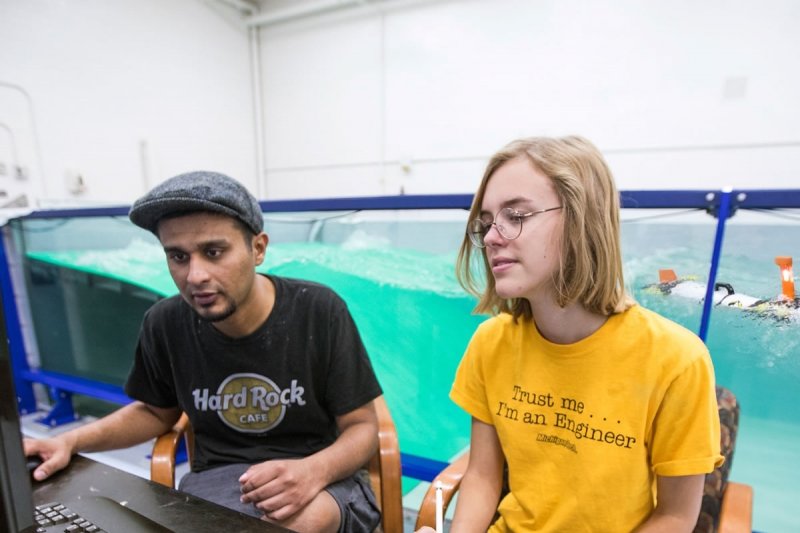Capturing Complexities
Controlling submerged and partially submerged bodies, whose motions are coupled hydrodynamically, is one of our primary research areas. An array of wave energy converters (WECs) is one example where the objective is to maximize total energy extraction. A WEC array is one component of a Marine Energy Grid (MEG) that can replenish unmanned underwater or aerial vehicles (UUVs, UAVs). WECs on the outside of the array respond differently than do interior WECs. This suggests that a WEC’s control strategy, and possibly its physical design, should depend on its location in the array. Experimentally calibrated time domain and frequency domain models aid in understanding the complexities of their coupled motions, leading to optimal closed loop control strategies.
Efficient Processes
Model designs are refined prior to tank testing using custom motion platforms that emulate their wave field response. Mechanisms that are deployed from ships, such as actively controlled ramps and UUV launch and recovery systems, can also be tested using a combination of motion platforms for ship motion emulation and the wave tank for evaluation of the partially submerged mechanism.
Delivering Consistency
Obtaining accurate and precise data is critical for model calibration and for evaluating the performance of closed loop control systems. The digital control of the wave tank’s paddles, along with a combination of wave gauges and an optical tracking system, provides the necessary precision and repeatability.
Dr. Gordon Parker
Wavetank@mtu.edu
906-370-1341

